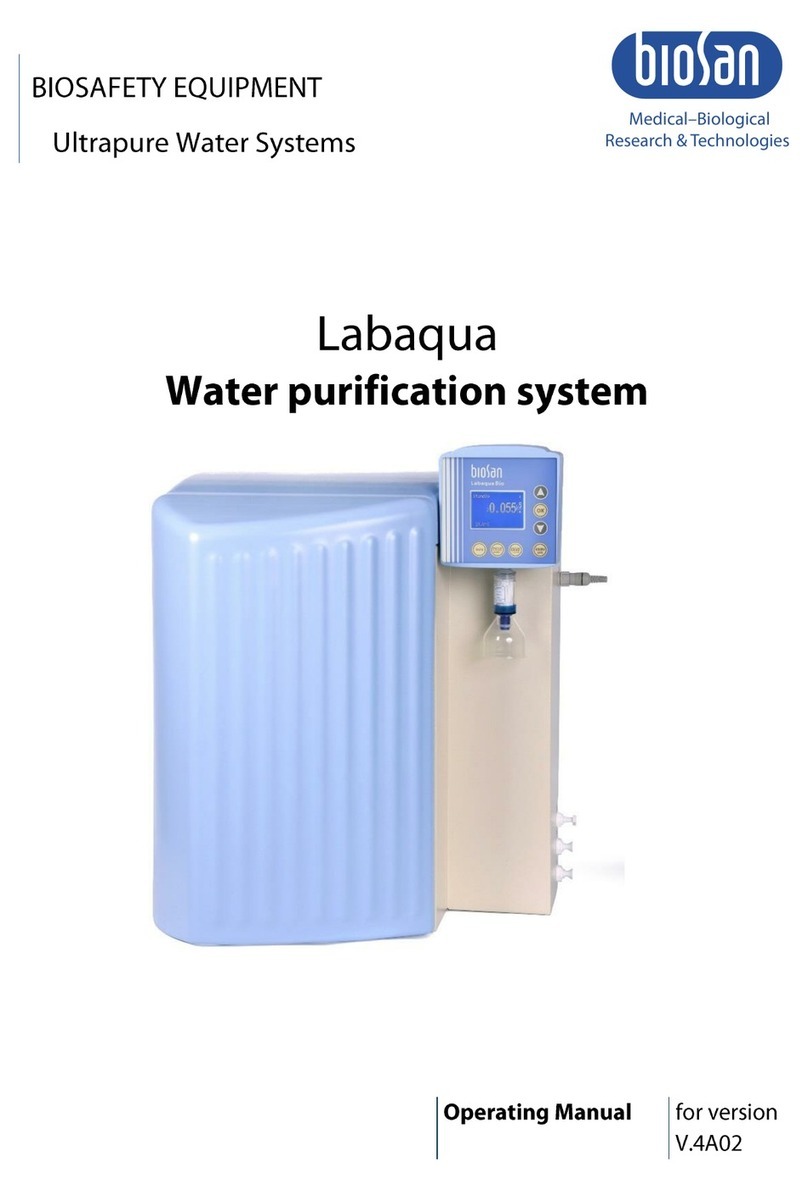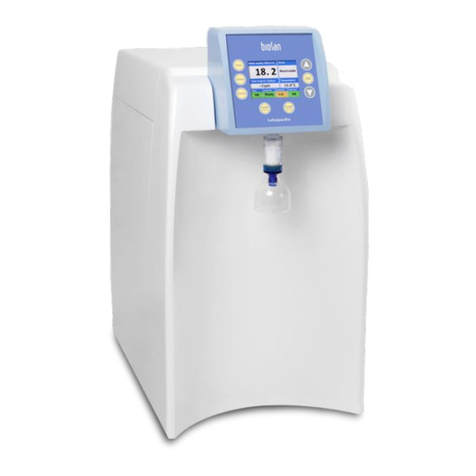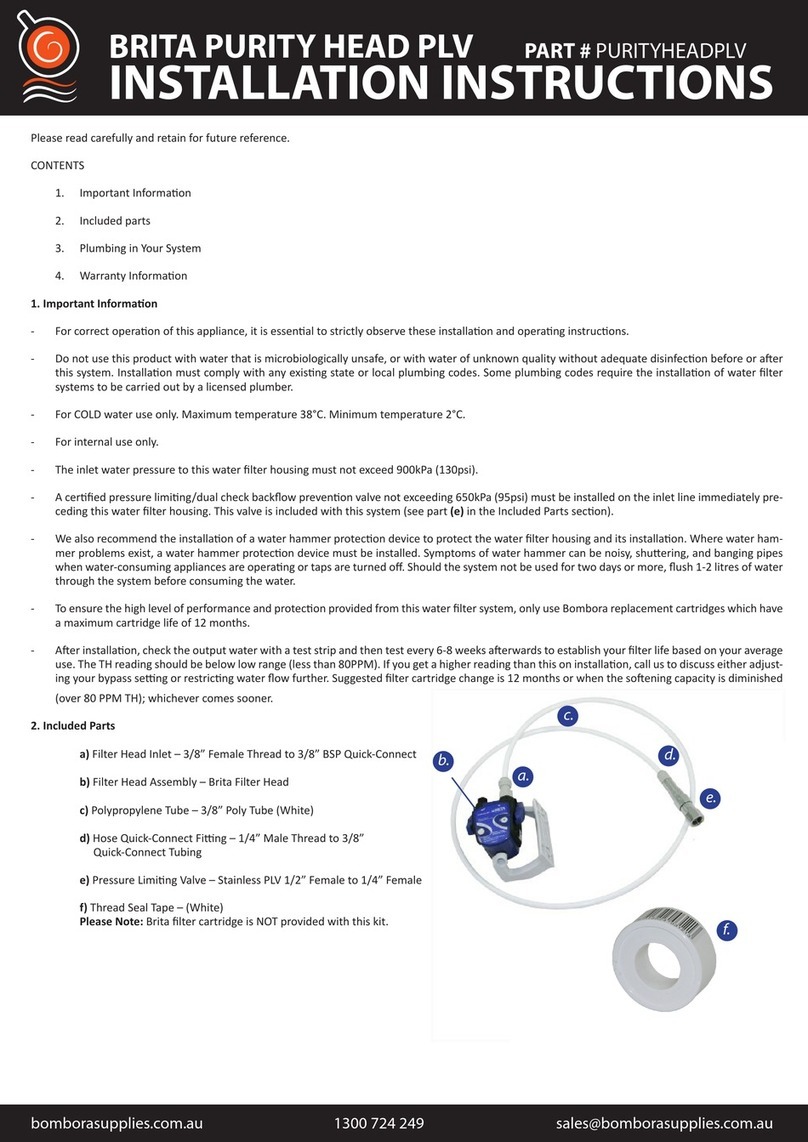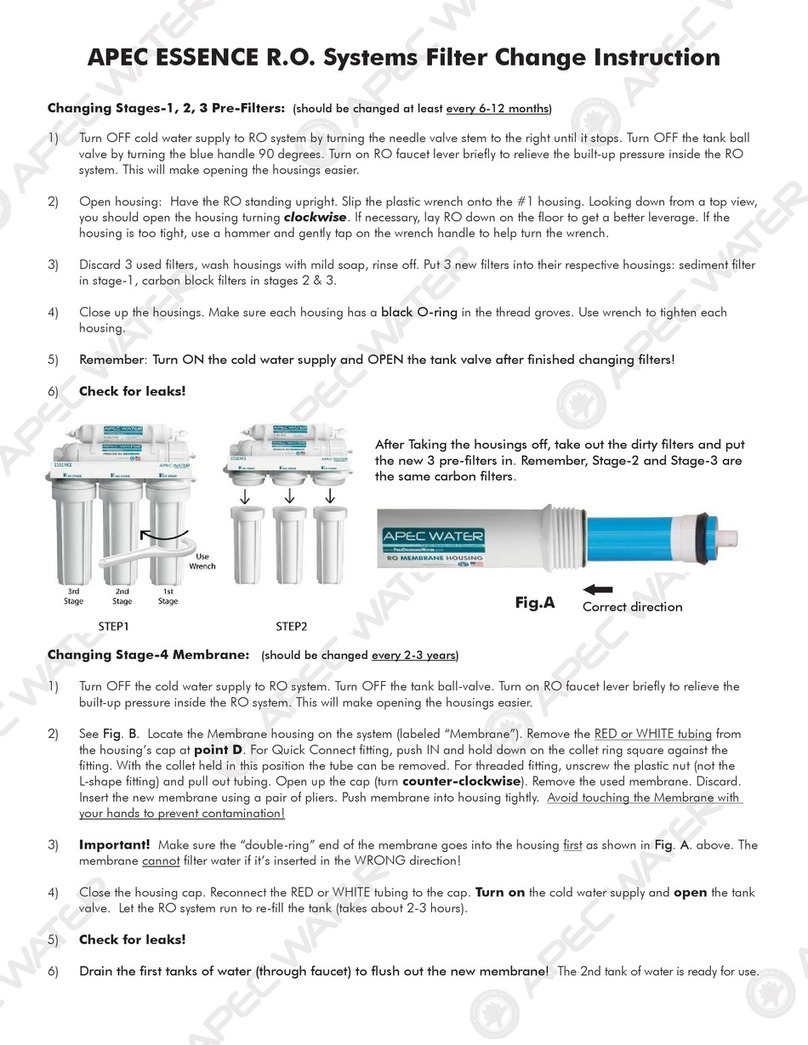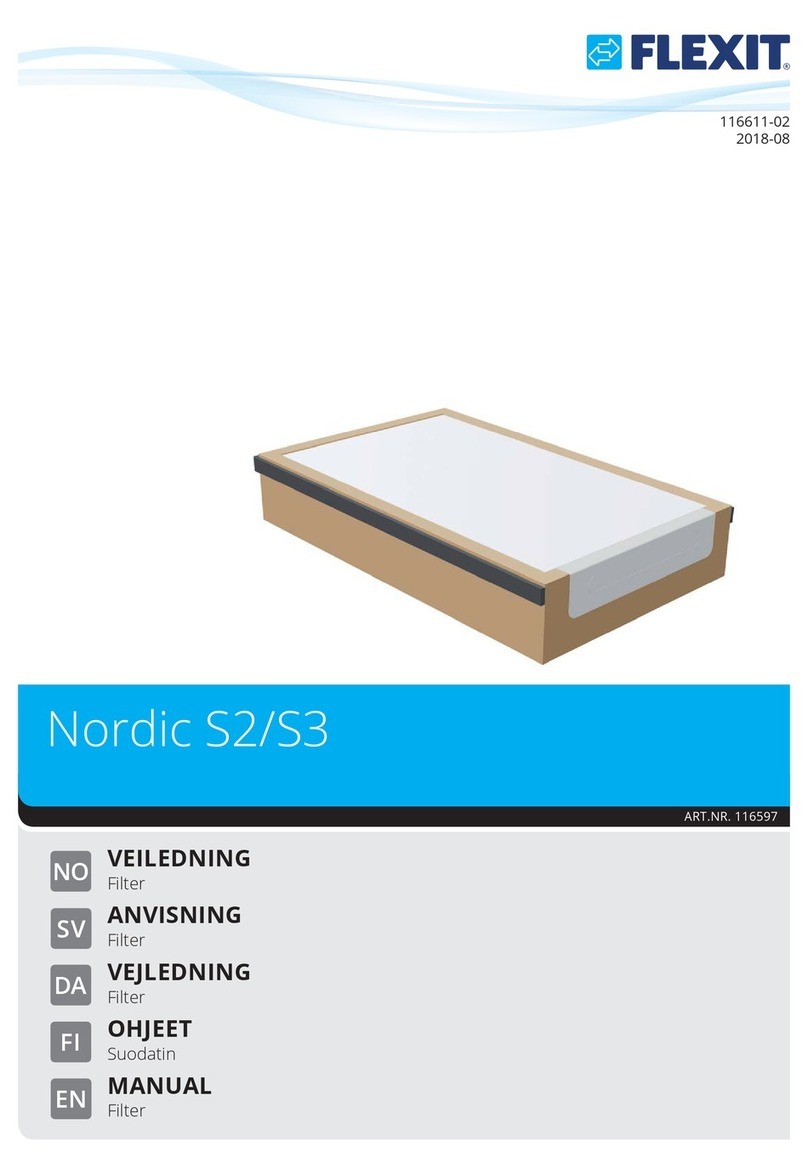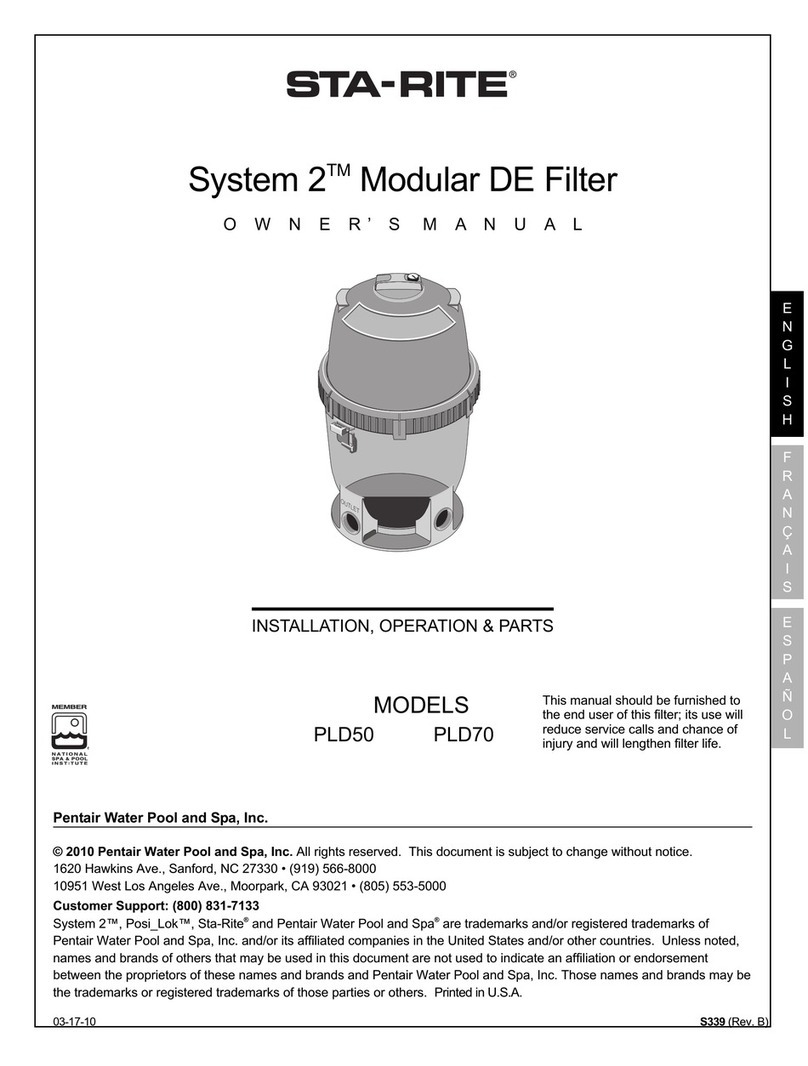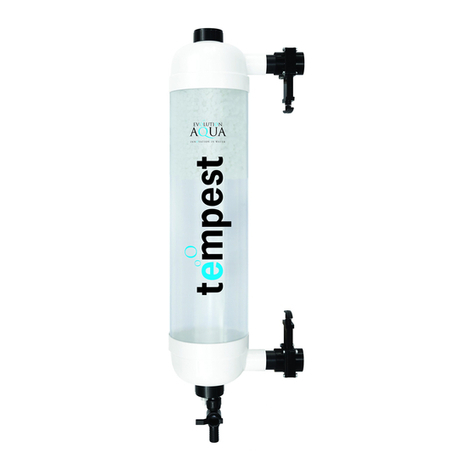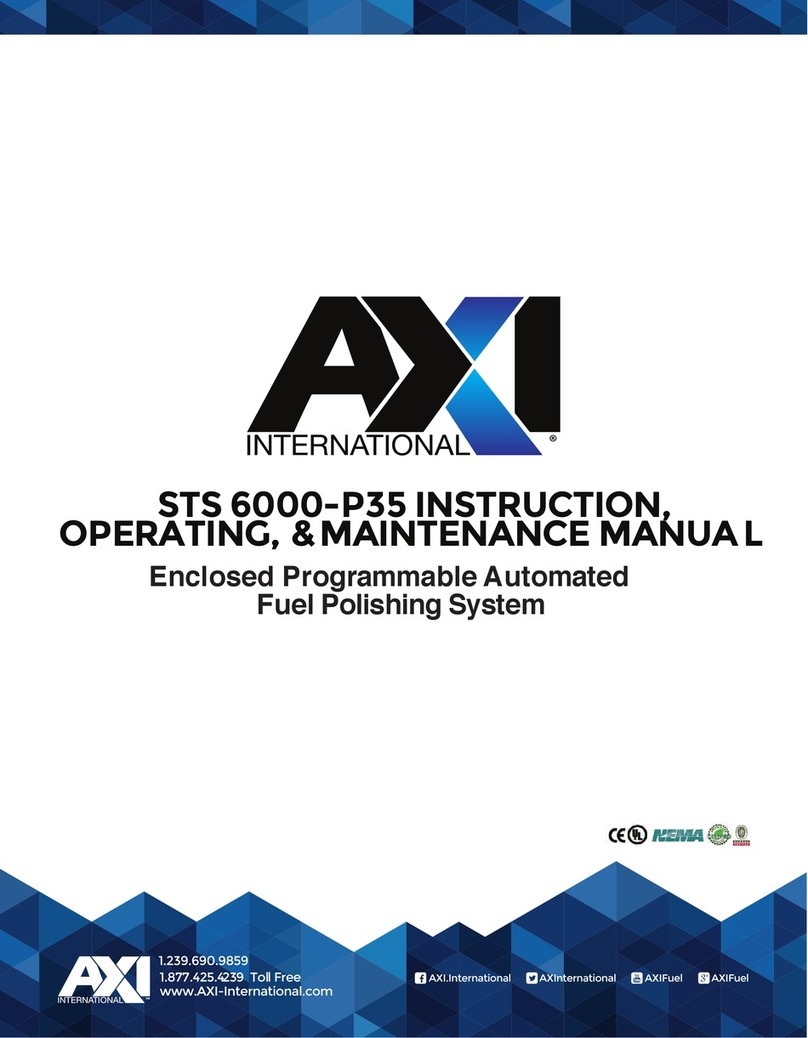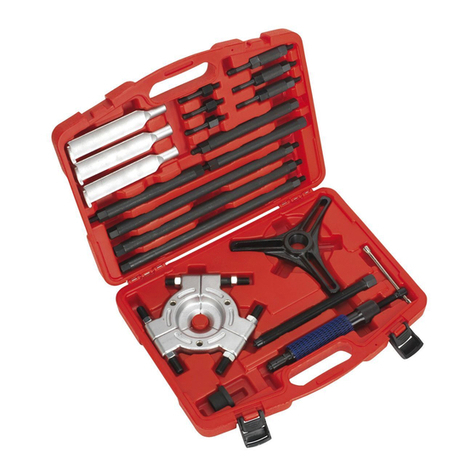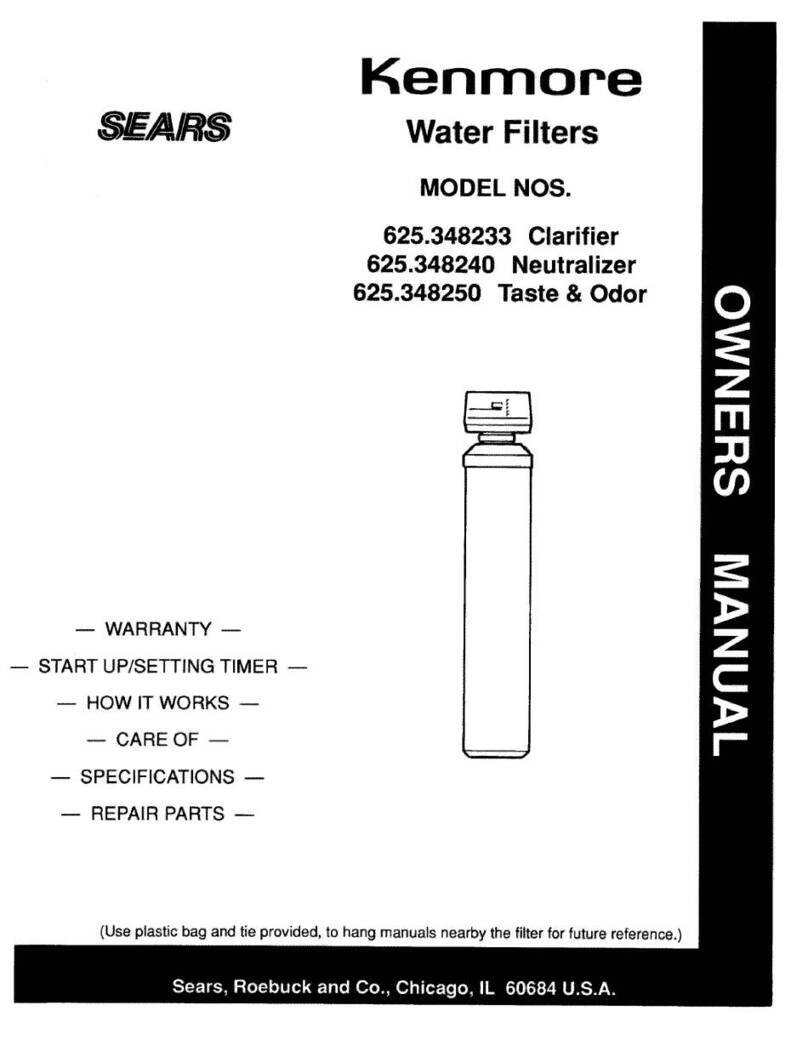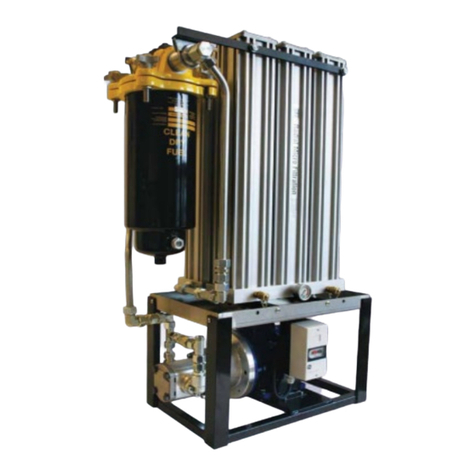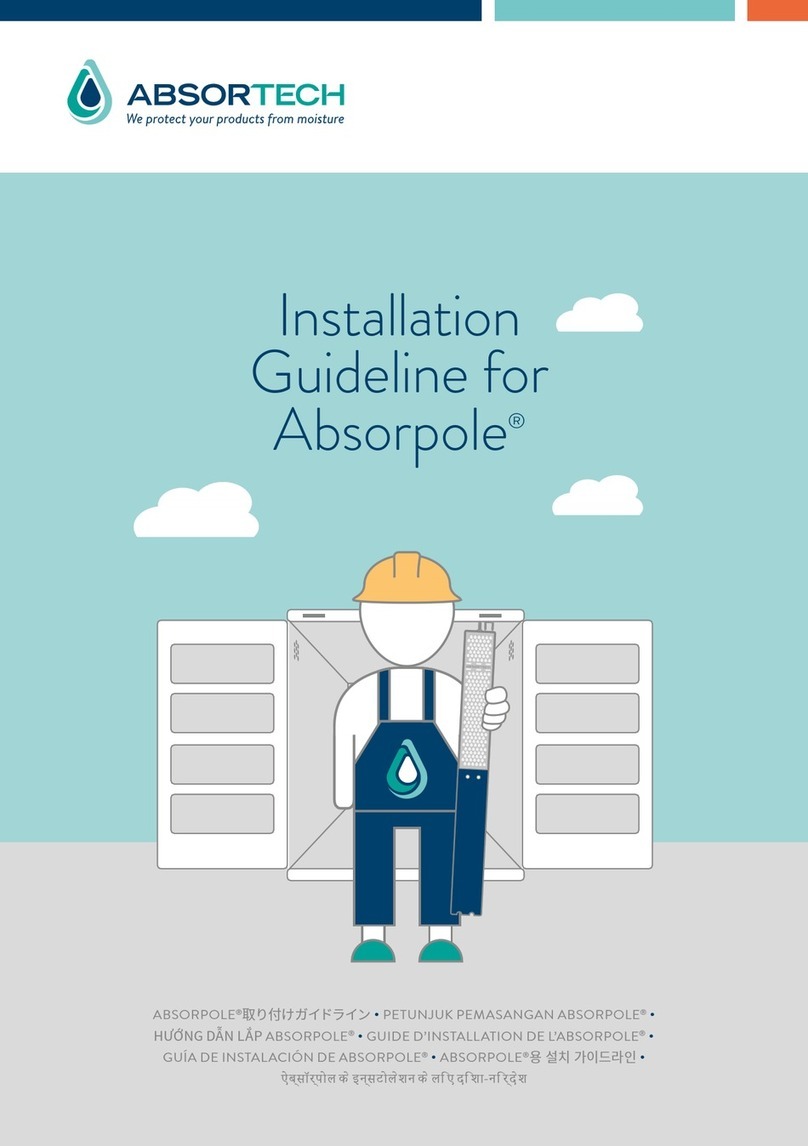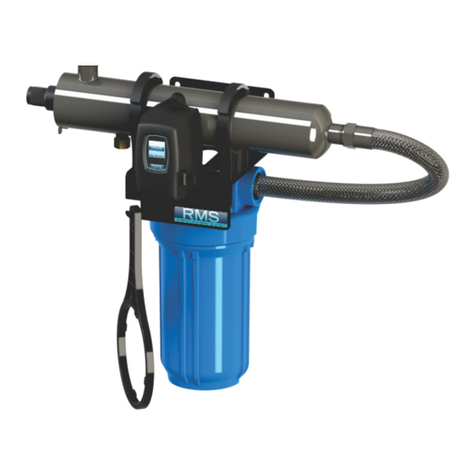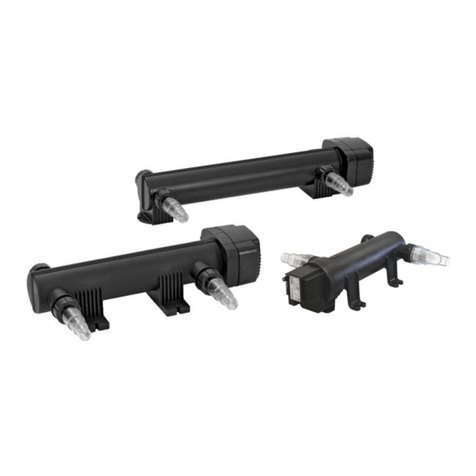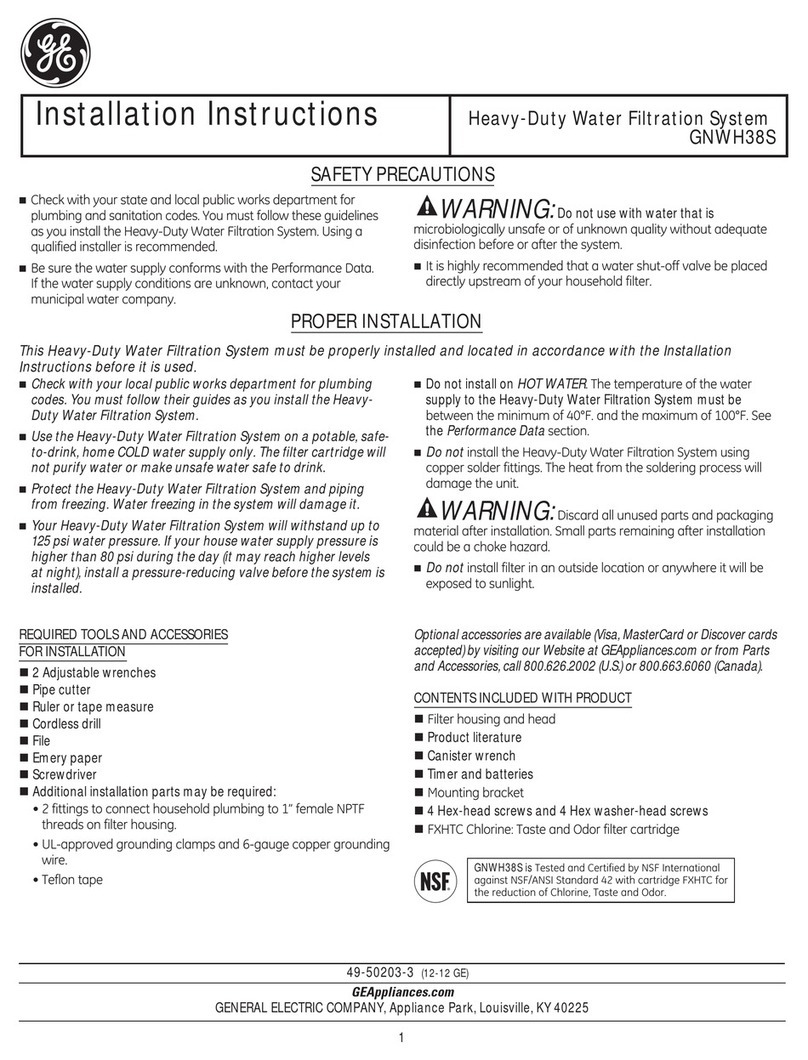Biosan Labaqua Trace User manual


2 Edition 5.02
If you have any feedback on our products or services, we would like to hear from you.
Please send all feedback to:
Manufacturer:
SIA Biosan
Ratsupites iela 7 k-2, Riga, LV-1067, Latvia
Phone: +371 674 261 37
Fax: +371 674 281 01
https://biosan.lv
Marketing:marketing@biosan.lv
Service: service@biosan.lv

Edition 5.02 3
Contents
1. About this edition of user instructions.......................................................................3
2. Safety precautions ...................................................................................................4
3. General information..................................................................................................6
4. Pre-installation requirements....................................................................................9
5. Getting started........................................................................................................11
6. Operation ...............................................................................................................20
7. Specifications.........................................................................................................26
8. Ordering information ..............................................................................................27
9. Care and maintenance...........................................................................................28
10. Storage and transportation.....................................................................................32
11. Warranty.................................................................................................................32
12. EU Declaration of conformity..................................................................................33
1. About this edition of user instructions
1.1 The current edition of the user instructions applies to the following models:
Model
Version
Labaqua Trace, water purification system
V.5A01
Labaqua HPLC, water purification system
V.5A02
Labaqua Bio, water purification system
V.5A03
1.2 Edition 5.02 –June of 2022

4 Edition 5.02
2. Safety precautions
2.1 Symbols used in the manual
Caution!
Make sure you have fully read and understood the present instructions
before using the equipment. Please pay special attention to sections
marked by this symbol.
Caution!
Do not service the unit with an operating UV compartment. Otherwise,
operator can receive dangerous levels of UV emission.
2.2 Icons used on the unit and packaging
CE marking, manufacturer affirms conformity with European health, safety, and environ-
mental protection standards, see 12.1
WEEE directive marking, see 12.1
This sign marks the area of electrical grounding
Do not proceed further without reading the user and service instructions first
This sign indicates high voltage areas
2.3 General safety
•The protection provided can be ineffective if the operation of the appliance does not
comply with the manufacturer's requirements.
•Store and transport the unit as described in section Storage and transportation.
•After transportation or storage and before connecting it to the electric circuit, keep the
unit under room temperature for 2-3 hrs.
•Save the unit from shocks and falling.
•Before using any cleaning or decontamination methods except those recommended
by the manufacturer, check with the manufacturer that the proposed method will not
damage the equipment.
•Use only original parts and accessories, provided by manufacturer for this product.
•Do not make modifications in design of the unit.
•Do not block the ventilation openings
•Do not operate the unit with removed covers.
•Do not drink deionized water.
2.4 Water leakage prevention
•Ensure that no water tubes are bent.
•Ensure that all connections are watertight.
•Ensure that the drainpipe exit is lower than the drain fitting in the unit.
•Install a particle filter on the water access pipe. Warranty doesnot cover malfunctions
of the unit if the filter is not installed.
•Close off the water access pipe when leaving the unit for extended period.

Edition 5.02 5
2.5 Electrical safety
•Use a power line regulator if the local mains network is susceptible to fluctuations
exceeding 10% of the nominal values.
•Connect only to the mains with voltage corresponding to that on the serial number
label.
•When replacing fuses, re-check its placements.
•Do not plug the unit into an ungrounded power socket, anddo not use an ungrounded
extension lead.
•Ensure that the power plug is easily accessible during use.
•Disconnect the unit from the mains before moving.
•If liquid penetrates into the control module, disconnect the unit from the mains and
have it checked by a repair and maintenance technician.
•Do not operate the unit in premises where condensation can form. Operating condi-
tions of the unit are defined in section Specifications.
2.6 During operation
•Do not operate the unit in environments with aggressive or explosive chemical mix-
tures. Please contact manufacturer for possible operation of the unit in specific at-
mospheres.
•Do not operate the unit if it is faulty or has been installed incorrectly.
•Do not use outside laboratory rooms.
2.7 Biological safety
•The user is responsible to carry out appropriate decontamination if hazardous mate-
rial spills on or penetrates into the equipment.

6 Edition 5.02
3. General information
3.1 Unit overview.
Biosan Labaqua is Ultrapure water purification system which requires external water
tank that use tap water as feed water (tap water system). There are three models available:
Labaqua Trace, Labaqua HPLC and Labaqua Bio.
Water purification system Biosan Labaqua produces pure water that complies with
ISO 3696 Grade II and Grade I water requirements.
Pure (ISO 3696 Grade II) water applications include, but are not limited to:
•Feed for laboratory equipment (washing machines, clinical analysers, humidifiers,
autoclaves, hydrogen gas generators);
•Manufacturing of chemical and biochemical reagents;
•Buffer preparation;
•Microbiological media preparation;
•In some cases - sensitive analytical techniques (e. g. atomic absorption, ICP-OES);
•Wet chemistry;
•Spectrophotometry.
Ultrapure (ISO 3696 Grade I) water applications include but are not limited to:
•High sensitivity analytical techniques (ICP-MS);
•High performance liquid chromatography;
•TOC analysis
•Molecular biology;
•Cell culture. Table 1. Labaqua model comparison
Model
Labaqua Trace
Labaqua HPLC
Labaqua Bio
Grade I water resistivity
18.2 MΩ x cm
Grade I water conductivity
0.055 μS/cm
Grade II water conductivity
0.1 μS/cm
TOC
< 10 ppb
< 5 ppb
RNase
–
–
< 0.01 ng/mL
DNase
–
–
< 4 pg/μL
Bacteria
< 1 CFU/mL
< 0.01 CFU/mL
Endotoxins
0.15 EU/mL
0.001 EU/mL

Edition 5.02 7
Figure 1. Unit overview
1. Power switch (on the back panel) 2. Water access connection (on the back panel). 3. Control
panel and display. 4. Filter and clean water dispenser. 5. Pre-filter set, deionization and polish-
ing modules (behind side door)
Figure 2. Labaqua Trace scheme

8 Edition 5.02
Figure 3. Labaqua HPLC / Bio scheme
3.2 Operation principle.
3.2.1 The hydraulic diagram of the Biosan Labqua water purification system can be seen
in figures 2 and 3.
3.2.2 The input valve controls intake of feed water from the access. The first cleaning stage
is the pre-filter set that uses activated carbon to remove particles, free chlorine, or-
ganics and colloids. The pressure switch controls incoming water pressure.
3.2.3 The boost pump maintains pressure for the efficient operation of the reverse osmosis
membrane, deionization module and UV sterilization module (model Bio only). The
feed flow splits on the membrane into the permeate, which diffuses through the mem-
brane, and the concentrate, which passes over the membrane, carrying away con-
taminants through the drain. The permeate proceeds to the deionization module
where the remaining dissolved contaminants are removed.
3.2.4 Before entering the tank, model Bio sterilizes the water with an UV lamp. Water qual-
ity is controlled by Grade II water conductivity sensor. LCD display shows these val-
ues.
3.2.5 Purified water is stored in the tank. Water in the tank meets the requirements of ISO
3696 Grade II.
3.2.6 To obtain Grade I water, the Grade II water in the storage tank must pass through a
recirculation loop. For model Trace this loop consists of a recirculation pump, a pol-
ishing module, a Grade I water sensor and a dispense port with microfilter. Models
HPLC and Bio additionally include a photooxidation module and a TOC monitor.
Model Bio has an ultrafilter instead of a microfilter.

Edition 5.02 9
4. Pre-installation requirements
4.1 Make sure the following pre-installation requirements are met before unpacking and
installing the unit. Table 2a. Electrical requirements.
Operating current
200–240 V~
Operating frequency
50/60 Hz
Table 2b. Input water requirements.
Type of feedwater
Potable
Minimum pressure
≥ 0.5 bar
Maximum pressure
≤ 5 bar
Conductivity
< 1300 µS/cm
Temperature
5 ... 35°C
pH
4 ... 10
Fouling Index
< 10
Iron
< 0.1 ppm as CaCO3
Aluminium
< 0.05 ppm as CaCO3
Manganese
< 0.05 ppm as CaCO3
Free chlorine
< 1 ppm
Langelier saturation index
< +0.2
TOC
< 2000 ppb
Water access connections
½" male NPTF
4.2 Electrical requirements
•Use a power line regulator if the local mains network is susceptible to fluctuations
exceeding 10% of the nominal values.
•Connect only to the mains with voltage corresponding to that on the serial number
label.
•Do not plug the unit into an ungrounded power socket, and donot use an ungrounded
extension lead.
•Ensure that the power plug is easily accessible during use.
4.3 Water access connection.
4.3.1 Feedwater hardness affects water-cleaning quality. Using hard feedwater may result
in premature clogging of reverse osmosis membranesand reduced Grade II or Grade
I water output.
Caution!
Therefore, we strongly recommend installing a water softener or a poly-
phosphate particle filter if water hardness is above 160 ppm.
4.3.2 Filter and soften feedwater with polyphosphate-carbon 1 μm particle filter. If the filter
is not installed, pre-filter in the unit will clog and block the water flow. There must be
at least one filter on the feedwater access pipe. Filter is available in the local plumber
shops or by ordering at Biosan.

10 Edition 5.02
Figure 4. Filter on the water access pipe.
Caution!
Please note that if the pre-filter clogs prematurely, such malfunction will
be covered by warranty only of the service department receives photo-
graphic proof of the particle filter installed in the feedwater access pipe.
4.3.3 Feedwater connection port has to be ½" NPTF male thread. The system is
equipped with feedwater tube (¼" outer diameter) and a ½" NPTF female adapter
for water supply connection. The feedwater tube should be connected to the ¼"
John Guest adapter in the unit. Feedwater connection pipe must have a valve to al-
low closing off water supply.
4.3.4 Feedwater supply connector and drain should be within 3 meters from the unit loca-
tion.
4.4 Water leakage safety:
- Ensure that no water tubes are bent.
- Ensure that all connections are watertight.
- Feedwater access and drain connections must be no farther than 3 m from the unit.
- Water access connector is ½" male NPTF.
Caution!
Ensure that the storage tank is connected to the drain with a tube from
the OVERFLOW fitting. Ensure that the drain is lower than the OVER-
FLOW fitting. This prevents water leakage in case of water level sensor
malfunction.
4.5 Requirements for the installation site. Ensure that the unit is placed on a solid, level
surface not less than 320x560 mm, which is able to support its weight and the
weight of water inside the unit. The storage tank Pro requires at least 300x300 mm
free space. The tank during operation weighs up to 40 kg. The tank can be placed
below the unit. Ensure that all cables, tubes abd the power switch on the rear panel
of the unit are easily reachable.
4.6 Requirements for the environment. The water purification unit is intended for indoor
use only, at ambient temperature from +15°C to +30°C (59 to 86 °F) in a non-con-
densing atmosphere and relative humidity between 20% and 80%.

Edition 5.02 11
5. Getting started
5.1 Unpacking. Remove packing materials carefully and retain them for future shipment
or storage of the unit. Examine the unit carefully for any damage incurred during
transit. The warranty does notcover in-transit damage. Warranty covers only the units
transported in the original package.
Caution!
Due to the high weight of the unit, its unpacking and installing must be
carried out by two persons.
5.2 Complete set. Package contents:
5.2.1 Standard set:
- Water purificatiom system, Labaqua Trace/HPLC/Bio....................................1 pce.
- Storage tank Pro ..............................................................................................1 pce.
- Pre-filter cartridges...........................................................................................2 pcs.
- Polishing module..............................................................................................1 pce.
- Deionization module.........................................................................................1 pce.
- 0.22 μm filter dispenser (models Trace & HPLC) ...........................................1 pce.
- Ultrafilter dispenser (model Bio) .....................................................................1 pce.
- Adapter from ½" NPTF to ¼" John Guest ........................................................1 pce.
- Straight angle fittings for polishing & deionization modules .............................4 pcs.
- Tubes, ¼" OD ..................................................................................................5 pcs.
- Tube, ⅜" OD & straight angle fitting .................................................................1 pcs.
- Bypass tube for disinfection .............................................................................1 pce.
- Storage tank water level cable.........................................................................1 pce.
- Power cable ....................................................................................................1 pce.
- Tool for tube detaching.....................................................................................1 pce.
- User instructions ............................................................................................1 copy
5.2.2 Optional accessories:
- 1 μm particle filter, carbon........................................................................on demand
- 1 μm particle filter, polyphosphate-carbon ..............................................on demand
5.3 Setup. Ensure that the requirements listed in section 4. Pre-installation require-
ments are met.
5.3.1 John Guest fittings (figure 5). Unit is equipped with push-in John Guest fittings
(henceforth JG), with clamps that hold a tube with steel teeth without deforming the
tube or blocking the flow. O-type sealing ring ensures hermetic seal. To facilitate tube
detachment, a special tool for clamp pressing is included in the standard set.
Figure 5. John Guest type fitting and the tool for tube detaching.

12 Edition 5.02
5.3.2 Tube connection. Push the tube into the fitting to the stop (fig. 6/a) and tug back to
ensure the clamping (fig. 6/b).
a b
Figure 6. Connecting tubes
5.3.3 Disconnecting tubes. Ensure that the system is not under pressure. Press the clamp
sleeve on the fitting (fig. 7/1). This loosens the clamp and the tube can be detached
(fig. 7/2).
Note.
Use the tool for tube detaching (figure 5, right) included in the standard
set, for easier operation.
Figure 7. Detaching tubes
5.4 Side door and the rear panel. Side door provides access to installation sockets for
cleaning filters and modules (figure 8). Rear panel has inlet and outlet fittings and
sockets (figure 9).
Empty unit Work-ready unit
Figure 8. Filters and cleaning modules.
1. Deionization module socket. 2. Polishing module socket. 3. Pre-filter sockets.

Edition 5.02 13
Top Bottom
Figure 9. Rear panel.
1. Unit info and serial number. 2. Connector for the Flow Point 3 water dispenser.
3. Service socket. 4. Tank water level sensor socket. 5. Mains’cable socket and fuse socket. 6.
Power switch. 7. Connector for the Flow Point 3 water dispenser. 8. Feedwater inlet fitting.
9. Drain fitting.
10. Connector for the Flow Point 3 water dispenser. 11. Recirculating water inlet fitting.
12. Recirculating water outlet fitting.
5.5 Pro tank. Storage tank Pro, 30 L in volume, is equipped with water level sensor and
dispenser tap and is designed for storage and recirculation of clean water.
Front view Rear view Top view Bottom fittings
Figure 10. 30L Pro tank.
1. Tank level sensor socket. 2. Overflow. 3. Lid. 4. Air filter. 5. Dispenser tap. 6. Recirculating
water inlet fitting. 7. Recirculating water outlet fitting.

14 Edition 5.02
5.6 Order of filter and module installation. Open the side door (fig. 1/5) and install
cleaning modules in the following order: the deionization module and the polishing
module first (in sockets on fig. 8/1 and 8/2), then the pre-filters in sockets on figure
8/3.
5.7 Deionization and polishing module installation. Processes are identical for both mod-
ules.
5.7.1 Distinguish the modules (figure 11): deionization module is marked with a blue
sticker, polishing module –with a silver sticker on the front sides.
Figure 11. Polishing and deionization modules.
5.7.2 Remove both black corks from the module top.
Note.
Use the tool for tube detaching (figure 5, right) included in the standard
set, for easier operation.
Press down the small rubber ring on the fitting with fingers (fig. 12/a) or with the tool
(fig. 12/b) and remove the cork.
a b
Figure 12. Removing the cork.

Edition 5.02 15
5.7.3 Prepare two straight angle module connecting fittings (fig. 13/a) and insert them in
the module fittings to the stop, so that the free ends are rotated towards the side of
the module with guide rail (fig. 13/b). Check the connecting fittings for a tight fit.
a b
Figure 13. Installing the connectors.
5.7.4 Insert the guide rail in the slot (fig. 14/a). Push both connectors into the fittings on the
unit (fig. 14/b) to the stop. Check the connecting fittings for a tight fit.
a b
Figure 14. Fitting the module inside the unit.
5.7.5 Repeat the operation with the second module.

16 Edition 5.02
5.8 Pre-filter cartridge installation. Turn and remove the protective cap from both of the
cartridges (fig. 15/a). Insert a cartridge in the socket (fig. 1/3 and 15/b) and lock it in
place by turning cartridge a quarter turn to the right ( fig. 15/c) Check the cartridge for
a tight fit. Repeat the operation with the second cartridge.
a b c
Figure 15. Pre-filter installation.
5.8.1 Installed filters and modules look as on figure 8, on the right.
5.9 Tube and sensor installation.
5.9.1 Connect the ½" NPTF to ¼" JG adapter (fig. 16) to one of the ¼" OD tube. Connect
the NPTF/JG adapter to feedwater access pipe (section Pre-installation require-
ments), and the open end of the tube to the TAP WATER fitting on the rear panel
(fig. 9/7).
Figure 16. NPTF ½" to JG ¼" adapter for feedwater.
5.9.2 Connect another ¼" OD tube to the DRAIN fitting on the rear panel (fig. 9/8). Connect
the open end of the tube to the drain that is prepared according to section 4. Pre-
installation requirements.

Edition 5.02 17
5.10 Connecting the storage tank to the system. Position the tank on an even horizontal
surface (see 4.6). Locate two pairs of REC IN and REC OUT fittings: one pair on the
unit (fig. 9/9 and 9/10) and one pair on the tank (fig. 10/6 and 10/7)
5.10.1 Connect the REC IN fitting on the rear panel of the unit (fig. 17/a) and the REC OUT
fitting on the rear panel of the tank (fig. 17/b) using a ¼" OD tube.
5.10.2 Connect the REC OUT fitting on the rear panel of the unit (fig. 17/a) and the REC IN
fitting on the rear panel of the tank (fig. 17/b) using the remaining ¼" OD tube.
a b
Figure 17. Tank and system connection
5.10.3 Connect the ⅜" OD tube with straight angle fitting (fig. 18/a) to the OVERFLOW fitting
on the top side of the tank (fig. 10/2 & 18/b). Connect the open end of the tube to the
drain that is prepared according to section Pre-installation requirements.
a b
Figure 18. Overflow

18 Edition 5.02
5.10.4 Connect the water level sensor cable (fig 19/a) to the socket on the tank (fig. 19/b &
10/1) and to the socket on the unit (fig. 19/c & 9/4).
a b c
Figure 19. Water level data cable
5.11 Installation of dispenser filter.
5.11.1 For Trace and HPLC models. Unpack the 0.22 μm dispenser filter (fig. 20/a) and the
black sealing ring (fig. 20/b). Screw the filter in the slot below the display so that the
ring stays on top of the thread of the filter (fig. 20/c) in the slot as shown on figure
21/d. White bell cap must cover the dispenser at all times when the water is not being
dispensed.
a b
c d
Figure 20. 0.22 μfilter dispenser installation.

Edition 5.02 19
5.11.2 For Bio model. Unpack the dispenser ultrafilter (fig. 21/a) and the yellow sealing ring
(fig. 21/b). Screw the filter in the slot below the display so that the ring stays on top
of the thread of the filter (fig. 21/c) in the slot as shown on figure 21/d. Blue bell cap
must cover the dispenser at all times when the water is not being dispensed.
a b
c d
Figure 21. Ultrafilter dispenser installation.
5.12 Insert the power cable into the socket on the rear panel of the unit (fig. 9/5) and po-
sition it for an unobstructed access to cable and the plug.

20 Edition 5.02
6. Operation
6.1 Open feedwater access (see 4.4).
6.2 Check the power cable for damages and connect the plug to a grounded mains
socket. Turn the power switch (fig. 9/6) to I(on).
6.3 After several second of loading, the display shows (figure 22):
•Water quality and grade (fig. 22/5);
•Stage of the operation (fig. 22/7);
•Total Organic Carbon, or TOC, content (fig. 22/6);
•Temperature of the water (fig. 22/8);
•Indicator bar (fig. 22/11)
oStatus of the unit;
oDispense status;
oVolumetric dispense setting;
oTank level.
Figure 22. Control panel and display
6.4 Lowering and controlling TOC (only for HPLC and Bio models). To lower the total
organic carbon (TOC) content, previously purified water passes through organics
photooxidation module and a polishing module to remove resulting products. To
maintain a low TOC level, we recommend constant water recirculation in the storage
tank. TOC level measurements are performed during recirculation stage, and the val-
ues are displayed after the unit at least partially fills the tank and performs at least
one recirculation cycle , and the unit is at Filling, Grade I water dispensing or Recir-
culation stages (fig. 22/7).
6.5 Checking water quality. Press the Mode key (fig. 22/3) to check the water quality.
Unit changes the stage (fig. 22/7) and quality values appear (fig. 22/5).
1
2
3
4
5
6
7
8
9
10
11
12
Other manuals for Labaqua Trace
1
This manual suits for next models
2
Table of contents
Other Biosan Water Filtration System manuals
